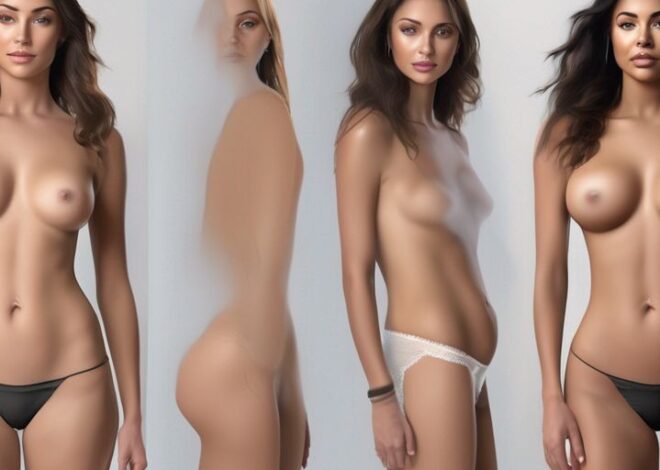
Exploring the Ethical Concerns of AI Undress Applications
The advent of AI undress technology, which utilizes advanced algorithms to digitally remove clothing from images, has sparked significant ethical, legal, and social concerns. As these applications, such as Nudify.Online, become more sophisticated and widespread, it is imperative to examine the implications they carry for individual privacy, consent, and societal norms. This article delves into the multifaceted issues surrounding AI undress technology, exploring its operation, legal ramifications, and the broader ethical and social impacts.
Key Takeaways
- AI undress technology, including applications like Nudify.Online, poses serious ethical and privacy concerns due to its ability to digitally remove clothing from images.
- Current laws are often inadequate to address the unique challenges posed by AI undress technology, leading to significant legal loopholes.
- Issues of consent are central to the debate on AI undress applications, raising questions about the moral implications of non-consensual image manipulation.
- The technology impacts social norms and personal relationships, potentially eroding trust and altering perceptions of privacy and decency.
- Developing technological safeguards and ethical guidelines is crucial to mitigate misuse and protect individuals’ rights in the evolving landscape of AI undress technology.
Overview of AI Undress Technology

How AI Undress Applications Work
AI undress applications utilize advanced machine learning algorithms to digitally remove clothing from images of individuals. This technology leverages neural networks that have been trained on vast datasets of clothed and unclothed images to predict what a person might look like without clothes. The primary function of these applications is to generate nude images from non-nude photos.
Technological Advances in AI Undress
Recent years have seen significant advancements in AI undress technology. Enhanced algorithms provide more accurate and realistic images, pushing the boundaries of what’s possible in digital image processing. These improvements have sparked both interest and controversy in equal measure.
Nudify.Online: A Case Study
Nudify.Online represents a groundbreaking advancement in AI undress technology. As a web-application, it uses the most advanced clothes-removing AI technology available in 2024. The platform has been pivotal in demonstrating both the capabilities and the potential ethical concerns associated with this technology.
Legal Implications of AI Undress Applications

Current Laws Governing AI Undress Technology
The legal framework surrounding AI undress technology is still in its infancy. Most jurisdictions lack specific regulations that address the unique challenges posed by these applications. Existing privacy and decency laws may not adequately cover the nuances of AI-generated content, leading to potential legal grey areas.
Legal Loopholes and Challenges
AI undress technologies, such as Nudify.Online, operate in a complex legal environment. The absence of explicit laws governing these applications opens up numerous loopholes. For instance, the technology can be misused to create non-consensual images, which may not be explicitly illegal in all regions. This ambiguity necessitates urgent legal reforms to protect individuals from potential abuses.
International Law and AI Undress
The global nature of the internet complicates the enforcement of laws against AI undress applications. Different countries have varying degrees of regulation, making it difficult to prosecute offenses that span multiple jurisdictions. International cooperation and unified legal standards are crucial to effectively manage the ethical and legal challenges posed by these technologies.
Privacy Concerns with AI Undress Technology

Invasion of Privacy Issues
AI undress technology, by its very nature, raises significant privacy concerns. The ability to generate nude images from clothed photos, as seen with applications like Nudify.Online, can lead to unauthorized use of personal images. This technology can easily be misused to invade personal privacy without the subject’s consent.
Consent and AI Undress
The issue of consent is central to the ethical deployment of AI undress applications. Without explicit consent from the individuals in the photos, using such technology breaches ethical and potentially legal boundaries. The importance of consent cannot be overstated, as it respects the individual’s autonomy and privacy.
Data Security and User Anonymity
Ensuring data security and maintaining user anonymity are crucial in handling sensitive data processed by AI undress technologies. Measures must be taken to protect user data from unauthorized access and ensure that anonymity is preserved. Here are some steps that could be implemented:
- Encrypting user data
- Implementing strict access controls
- Regularly auditing security protocols
It is essential to address these privacy concerns proactively to prevent misuse and protect individuals.
Ethical Dilemmas in AI Undress Applications

Moral Implications of AI Undress
The use of AI to digitally remove clothing from images raises profound moral questions. The core issue revolves around the respect for individual privacy and the potential for harm. This technology, while innovative, skirts the boundaries of ethical acceptability, often challenging societal norms about privacy and decency.
The Role of Consent in AI Undress
Consent is a critical component in the ethical deployment of AI technologies. In the context of AI undress applications, the absence of explicit consent from the individuals whose images are processed poses a significant ethical dilemma. This lack of consent can lead to feelings of violation and distress, highlighting the need for clear regulatory frameworks.
Potential Misuses of AI Undress Technology
AI undress technology, despite its intended uses, is susceptible to misuse. Potential misuse and exploitation of such applications can lead to serious ethical and social consequences. The technology could be used to harass or blackmail individuals, underscoring the urgent need for stringent controls and ethical guidelines to govern its use.
Social Impact of AI Undress Technology

Effects on Social Norms
The introduction of AI undress technology has significantly altered social norms related to privacy and decency. The ease of access to such applications has led to a normalization of digitally undressing images, which raises concerns about the erosion of societal boundaries.
Impact on Relationships and Trust
AI undress technology can severely impact personal relationships and trust. The potential misuse of personal images without consent can lead to breaches of trust and emotional distress. This technology poses a real threat to the integrity of personal interactions.
Public Perception and Acceptance
The public’s perception of AI undress technology is largely negative. Concerns about privacy invasion and ethical misuse dominate the discourse. However, there is a segment of the population that views these technologies as a form of artistic or personal expression, leading to polarized opinions.
Technological Safeguards and Solutions

Developing Ethical AI Guidelines
Developing comprehensive ethical guidelines is crucial for governing the use of AI undress technologies. These guidelines should address the moral responsibilities of developers and users, ensuring that applications are used responsibly and ethically.
Technological Barriers to Prevent Misuse
To prevent misuse, technological barriers can be implemented. These include watermarking output images to indicate manipulation and using secure user authentication to ensure that only authorized users can access the technology.
Future Directions in AI Undress Technology
The future of AI undress technology should focus on enhancing privacy and security features. Innovations might include advanced encryption methods and the development of AI systems that can detect and prevent unauthorized use of undress technologies.
Case Studies and Real-World Examples

Analysis of Nudify.Online
Nudify.Online represents a significant case in the study of AI undress technology. It utilizes the most advanced clothes-removing AI technology as of 2024. The application’s ability to strip off clothes from images online has raised numerous ethical and privacy concerns. The platform’s approach and the public’s reaction provide valuable insights into the societal impact and the ethical boundaries of such technologies.
Other AI Undress Applications
While Nudify.Online is prominent, there are other applications in the market that also pose similar ethical and privacy issues. These applications vary in their approach and technology but share common concerns regarding consent and privacy invasion.
Lessons Learned from Existing Models
The deployment of AI undress technologies like Nudify.Online has taught us several lessons:
- The importance of clear consent mechanisms
- The need for robust data security measures
- The societal impact of such technologies
These lessons are crucial for developing future guidelines and technologies that respect user privacy and ethical standards.
Conclusion
In conclusion, the ethical concerns surrounding AI undress applications like Nudify.Online are significant and multifaceted. These technologies, while impressive in their technical capabilities, pose serious risks related to privacy, consent, and misuse. As we advance in the field of artificial intelligence, it is crucial to establish robust ethical guidelines and legal frameworks to govern the use of such applications. Ensuring that technological advancements do not compromise human dignity and rights must be a priority. The conversation about the ethical use of AI in sensitive areas must continue to evolve, involving policymakers, technologists, and the public to safeguard individual privacy and uphold moral standards.
Frequently Asked Questions
What is AI Undress technology?
AI Undress technology refers to the use of artificial intelligence to digitally remove clothing from images of individuals, typically without their consent. It utilizes advanced algorithms to predict and reconstruct what a person might look like without clothes based on the visible parts of their body.
How does Nudify.Online work?
Nudify.Online is an advanced web-application that uses the latest clothes-removing AI technology of 2024 to strip off clothes from images uploaded by users. It employs sophisticated algorithms to analyze the clothing and underlying body structure in images to generate a realistic depiction of the person without clothes.
What are the legal implications of using AI Undress applications?
The use of AI Undress applications can raise significant legal issues, including violations of privacy laws, potential copyright infringement, and breaches of decency or obscenity laws. Different countries have varying regulations, and users might face legal consequences depending on local laws.
Are there any ethical guidelines for AI Undress technology?
Currently, specific ethical guidelines for AI Undress technology are sparse. However, the development and use of such technologies should adhere to general ethical standards in technology, which emphasize user consent, privacy protection, and transparency.
Can AI Undress technology impact social relationships?
Yes, AI Undress technology can have profound effects on social relationships and trust. The misuse of such technology to create non-consensual images can lead to emotional distress, defamation, and a breakdown of trust among individuals.
What are the potential safeguards against misuse of AI Undress technology?
Potential safeguards include implementing strict user verification processes, encryption of user data, legal and ethical guidelines for use, and technological barriers that prevent the creation of images without explicit consent. Additionally, public awareness and education on the responsible use of such technology are crucial.



